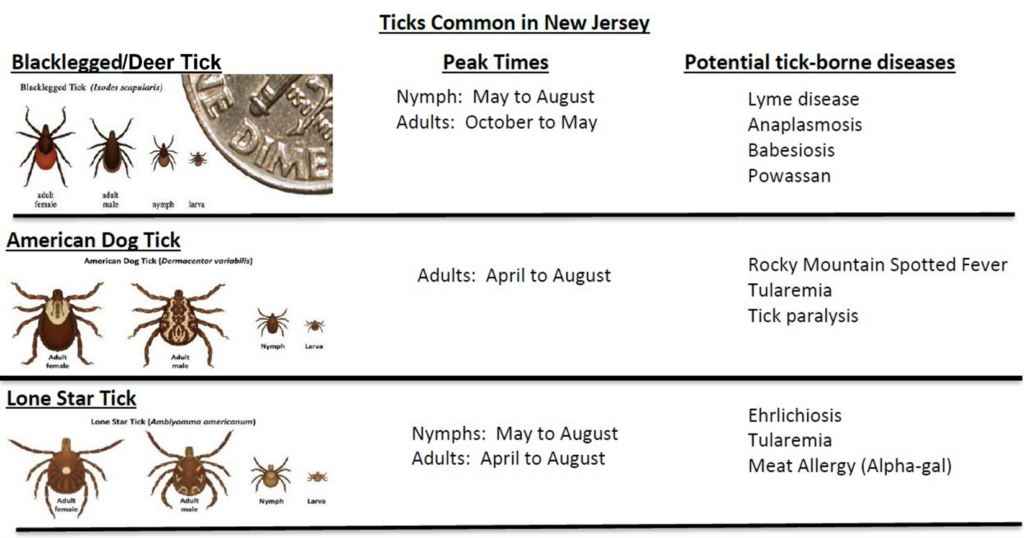Main Content
By Steve Yergeau, Rutgers Cooperative Extension
As the weather warms up and people venture outside more this summer, everyone should be mindful of ticks and the potential of tick-borne diseases. Tick-borne diseases are not spread between two people but rely on ticks for transmission.
If you know you have been bitten by a tick, it is important to watch for symptoms and talk to your health-care provider. Early treatment can be highly effective. For more information on tick-borne diseases, please visit the Centers for Disease Control and Prevention website at www.cdc.gov/ticks/tickbornediseases/.
Lyme disease is the most common tick-borne disease and has a high incidence rate in New Jersey (confirmed cases per 100,000 people). Lyme disease is carried by the blacklegged or deer tick and about 50% of deer ticks carry the Lyme bacteria. The nymphs (teenager stage) are more likely to transmit Lyme because people don’t notice them due to their small size. The nymphs are most active from mid-May to early July in New Jersey.

Tick Protection
It is important to take precautions as the weather warms up and ticks that transmit diseases are most active. When outdoors, be sure to cover up; wear long, solid, and light-colored clothes with pants tucked into socks. Also, apply Environmental Protection Agency registered insect/tick repellent on exposed skin and clothing according to the instructions on the product label. Products containing DEET, picaridin, or oil of lemon eucalyptus may be used on skin. Permethrin should only be used on clothing and outdoor gear. Follow all product label instructions.
Tick Removal
After being outside, be sure to check yourself for ticks. This includes checking your clothing and making sure to wash any clothes and checking your hair and any other exposed part of your body. Also, if you have pets, check your pets for any ticks.
If a tick is found, safely remove the tick using tweezers or a tick key. The goal is to grasp the tick as close to the skin as possible and to pull it up with even pressure. Try to remove the entire tick.
Some Rutgers Cooperative Extension offices provide free tick identification. If you find a tick, place the tick in a sealed bag or container with a moist towel. For more information, visit njaes.rutgers.edu/county/ to contact your local Rutgers Cooperative Extension office about their services and if they can help you get your tick identified.
Resources and Further Reading on Ticks
Rowe, Amy. 2022. ‘Ticks and Lyme Disease’ (video).
www.youtube.com/watch?v=BAlh5DPk1rE&list=PLKx8NLAujm_lpOimXWyHxPD613H7HjZKd&index=20
Centers for Disease Control. 2021. ‘Ticks’ (website).
www.cdc.gov/ticks/index.html
University of Maine Cooperative Extension’s ‘Insect Pests, Ticks, and Plant Diseases’ (fact sheet).
extension.umaine.edu/ipm/ipddl/publications/5108e/
Rutgers Cooperative Extension’s ‘Prevent Tick Bites: Prevent Lyme Disease’ (fact sheet).
njaes.rutgers.edu/pubs/publication.php?pid=FS443